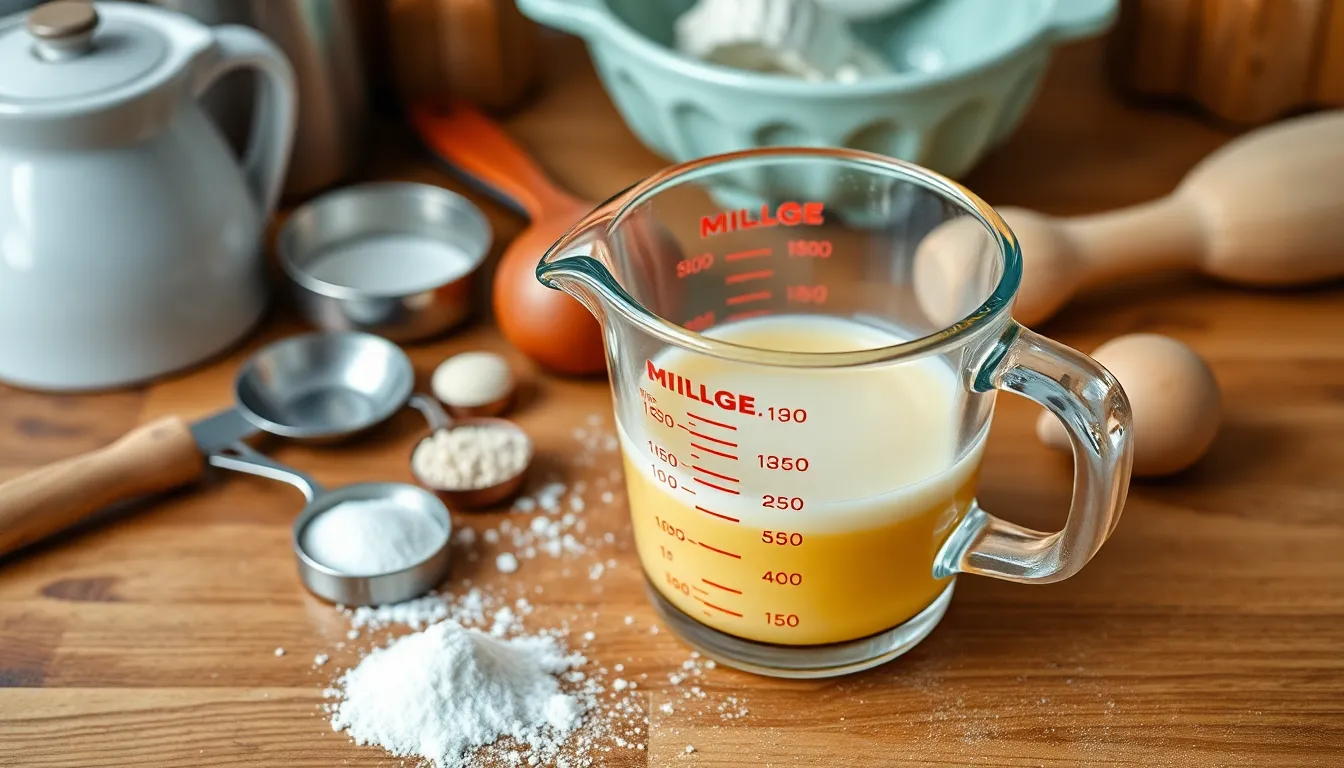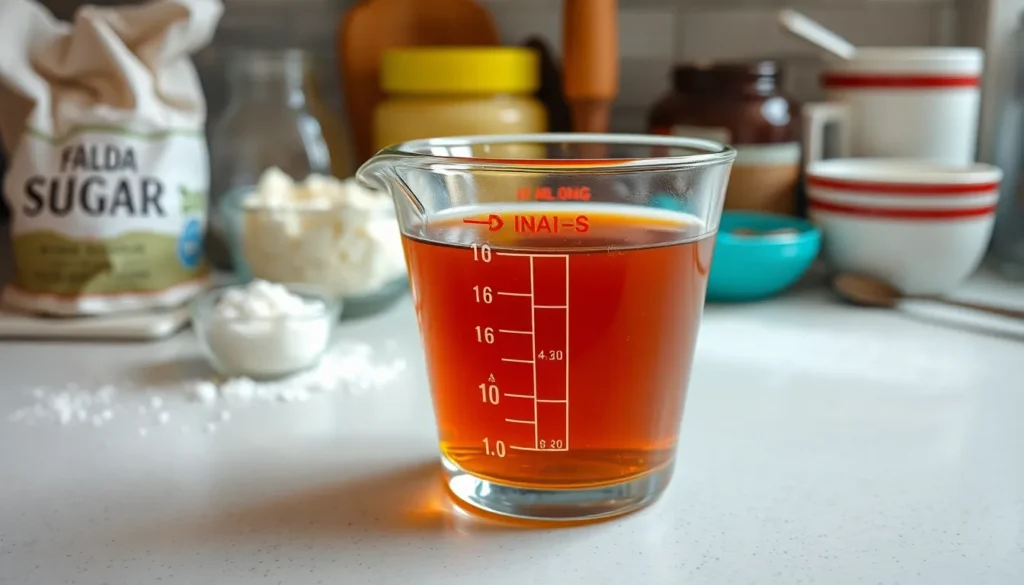Table of Contents
ToggleWhen it comes to cooking or mixing drinks, knowing measurements can feel like deciphering a secret code. Ever found yourself staring at a recipe that calls for 16 ounces and thought, “How many cups is that?” You’re not alone! This common kitchen conundrum has puzzled many, but fear not—this article’s got your back.
Understanding Fluid Ounces
Fluid ounces measure the volume of liquids. One fluid ounce is approximately 29.57 milliliters, a standard conversion accepted in culinary practices. Cooking often involves measuring ingredients precisely, making fluid ounces important for accuracy.
Knowing that 8 fluid ounces equal 1 cup helps clarify conversions. For practical uses, such as recipes or beverages, using cups provides an easier reference for many. To convert fluid ounces to cups, divide the number of fluid ounces by 8. Thus, 16 fluid ounces equate to 2 cups.
When preparing beverages, understanding these measurements ensures proper proportions, enhancing flavors. Bakers benefit from knowing these conversions, particularly when creating cakes or pastries that require specific liquid measurements.
Using online calculators or conversion charts can simplify the process. These tools offer quick conversions for those who prefer not to do the math manually.
Recipes often include both fluid ounces and cups, catering to different audiences. Familiarity with these measurements aids in successful cooking and baking. Understanding fluid ounces provides a foundation for measuring various liquid ingredients accurately.
Conversion Basics

Conversions between fluid ounces and cups, along with accurate measurements, play significant roles in cooking and baking. Precise measurements impact the final outcome of recipes, enhancing flavors and textures.
Importance of Accurate Measurements
Accurate measurements prevent common mistakes. A small error can lead to dishes that taste off or don’t rise correctly. Recipes often require liquid measurements to be precise, especially when balancing ingredients. Substituting one measurement for another without proper calculation alters the recipe. Understanding these conversions empowers cooks to replicate favorite dishes successfully every time. Familiarizing oneself with fluid ounces and cups creates a reliable reference for various recipes.
Common Conversions
Several common conversions simplify the cooking process. Eight fluid ounces equal one standard cup, making it straightforward to measure liquids. Additionally, 16 fluid ounces convert to two cups. This fact aids in recipe planning. Knowing that 32 fluid ounces equals four cups further assists in larger volume measurements. Generally, having a conversion chart handy helps streamline meal preparation. Online calculators provide quick answers for those unsure about specific conversions.
Calculating 16oz in Cups
Converting fluid ounces to cups involves simple arithmetic. Since 1 cup equals 8 fluid ounces, calculating 16 ounces translates to 2 cups. This basic formula aids in making quick conversions.
Steps for Conversion
- Identify the total fluid ounces to convert, in this case, 16 ounces.
- Recognize that 8 ounces equal 1 cup.
- Divide the total ounces by the ounces per cup: 16 divided by 8.
- Obtain the result: 2 cups.
This straightforward method provides accuracy in conversion.
Examples of 16oz Measurement
Various scenarios illustrate the use of 16 ounces in cups. A standard bottle of water often contains 16 ounces, equating directly to 2 cups. In baking, recipes may call for 16 ounces of milk, translating into the same 2 cups. Many beverage servings also come in 16-ounce portions, highlighting its common usage. Recognizing these instances can enhance understanding of volume measurements in different contexts.
Practical Applications
Understanding fluid ounces and cups plays a crucial role in various contexts, particularly in cooking and daily routines.
Cooking and Baking
In cooking and baking, precise measurements significantly impact the final product. Recipes often specify ingredients in fluid ounces and cups, so knowing that 16 fluid ounces equals 2 cups ensures accuracy. Bakeries typically require exact amounts for dough consistency, while home cooks depend on reliable conversions for sauces and soups. Using 16 ounces of milk daily for recipe preparation highlights the need for familiarity with these measurements. Familiarity with conversions builds confidence in the kitchen.
Everyday Use
In everyday scenarios, converting 16 ounces to cups proves beneficial. Many beverages, including bottled water and coffee, utilize this measurement. Knowing 16 fluid ounces equals 2 cups simplifies portioning drinks. When using a standard 16-ounce coffee mug, it’s helpful for serving. Events often involve recipes calling for this amount, ensuring attendees enjoy balanced flavors. Understanding this conversion streamlines shopping and meal planning, saving time.
Understanding the conversion between fluid ounces and cups is essential for anyone who enjoys cooking or mixing drinks. Knowing that 16 ounces equals 2 cups can simplify meal prep and ensure accurate measurements. This knowledge not only enhances the cooking experience but also builds confidence in the kitchen.
By grasping these conversions, individuals can avoid common pitfalls that arise from inaccurate measurements. Whether it’s for baking, preparing beverages, or planning meals, being familiar with these measurements can lead to better results. With the right tools and a clear understanding of fluid ounces and cups, anyone can elevate their culinary skills.




